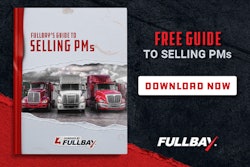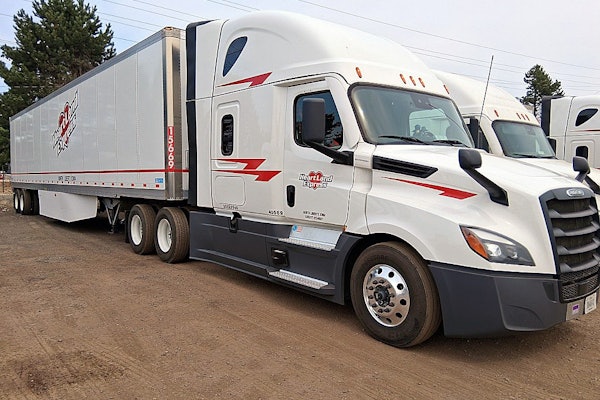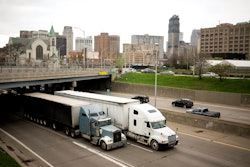From nuclear verdicts exceeding $10 million to operational shutdowns, fleets face unprecedented financial risks from compliance failures.
When a serious crash occurs and compliance violations are revealed, the financial stakes for carriers can be severe. Brandon Wiseman, president of Trucksafe Consulting, noted that financial exposure typically comes from two directions: civil litigation and regulatory enforcement.
Nuclear verdicts are on the rise and often stem, at least in part, from aggravating factors like systemic non-compliance, Wiseman noted.
The second source of financial risk is regulatory, Wiseman said. The Federal Motor Carrier Safety Administration (FMCSA) or a state enforcement agency may impose fines if an audit reveals ongoing violations.
“Not all accidents, even those involving fatalities, trigger an audit. In determining the penalty amount, the FMCSA considers several factors, including the carrier’s history of violations, the gravity of the offense, and the carrier’s ability to pay. The average fine issued by the FMCSA following an audit is around $5,000,” Wiseman said.
The consequences of compliance failures extend beyond simple fines. Lori Johnson, a senior consultant at Fleetworthy, said, “It can cost you not just monetary value and fines and penalties, but you’ve got lost productivity. You might need to buy new equipment. You’ve got insurance costs, claim costs.”
The stakes can be make-or-break for many businesses. “For many small and mid-sized fleets, a single incident tied to poor compliance management can threaten the survival of the entire business,” said Joel Sitak, CEO of Foley.
For insurers, the effects of compliance failures and litigation are quite visible. “The U.S. commercial auto sector has experienced 13 consecutive years of underwriting losses. It remains the worst-performing line of business in the property/casualty industry,” said Mark Friedlander, senior director of media relations at the Insurance Information Institute.
The key driver, Friedlander explained, is the rise of “legal system abuse” fueled by third-party litigation funding. “Billboard attorneys are aggressively marketing their services to consumers to file lawsuits versus trying to settle a vehicle accident claim on their own. This ‘jackpot justice’ approach promises huge monetary rewards to accident victims, but it typically only generates more revenue for billboard attorneys.”
Compliance violations not only increase insurance premiums for carriers, Friedlander pointed out, but also their liability exposure, which generate the types of lawsuits that lead to nuclear verdicts.
Critical compliance gaps
The most common regulatory violations that tend to drive both accidents and litigation damages, Wiseman said, are hours-of-service violations and licensing issues.
“Fatigue and lack of qualifications are major contributors to accidents, and these particular violations tend to play into that,” Wiseman added.
Another overlooked risk is incomplete driver files, Sitak said. “A missing medical certificate or unrecorded MVR review can quickly escalate into violations, fines, and even disqualification.”
Drug and alcohol testing compliance is another weak spot, Sitak said. “Missed randoms or Clearinghouse queries may seem minor, but they compound under audit and can lead to higher CSA scores, increased insurance premiums, and legal exposure.”
The financial penalties are severe. Johnson noted, “Failure to check your drivers in the Clearinghouse can be really expensive. Those can be around $10,000 per day up to the maximum.”
Johnson also pointed out other critical minor issues that escalate:
- Putting a CDL B driver in a CDL A vehicle, resulting in out-of-service violations
- Missing signatures on daily vehicle inspection reports
- Expired medical cards
Building a solid foundation
Compliance should start at the very beginning, Johnson said, noting the importance of having a good driver qualification and hiring process in place.
Sitak pointed out the importance of having proactive monitoring tools that serve as early warning systems. “That means continuous MVR checks instead of annual reviews, automated alerts for expiring CDLs and medical cards, and dashboards that flag incomplete driver files.”
“A real-time Compliance Score, built on a company’s data, helps managers quickly see their biggest risks and prioritize what matters most. New technology goes further, assessing risk continuously and sending smart alerts before issues turn into costly violations,” he said.
Understand regulatory fine structures
Fines vary significantly depending on their source and type of violation, Johnson noted. Roadside inspection fines are state-dependent, ranging from $25 to hundreds of dollars.
Fines resulting from DOT audits are more consistent, Johnson said. “In a compliance audit, they’re going to fine you per violation, per day, up to the maximum amount. So that can get pricey."
Record-keeping violations can cost $1,000 per violation, up to $15,000 or more, while hazmat violations are the most expensive and can run into hundreds of thousands of dollars, Johnson explained. Clearinghouse violations carry steep penalties at $10,000 per day up to the maximum.
Supervisors, managers, and the company can also be fined, Johnson said. “I had one instance in an audit where they fined the supervisor because he was doing something he wasn't supposed to do, so he had to pay a price. A personal fine out of his pocket, as well as the company being assessed fines.”
Johnson also pointed out that fleets should actively manage their CSA scores, including monitoring for assigned violations and filing data corrections to get them removed from records, which can lower CSA scores and reduce the risk of triggering an audit.














